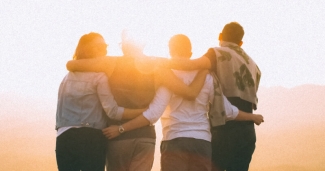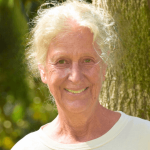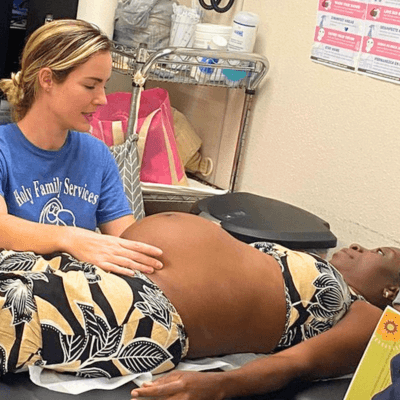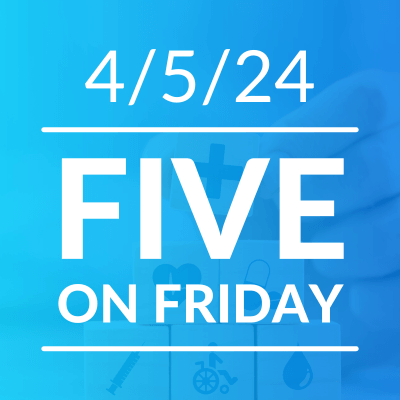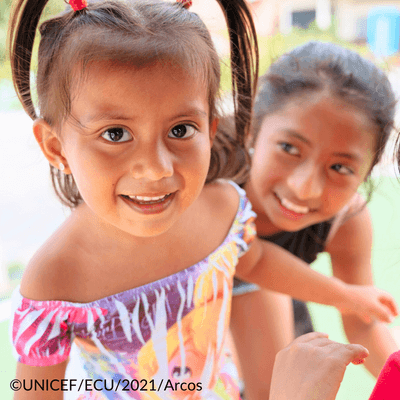Chronic Sorrow: The Case for Turning Individual Grief to Collective Caring
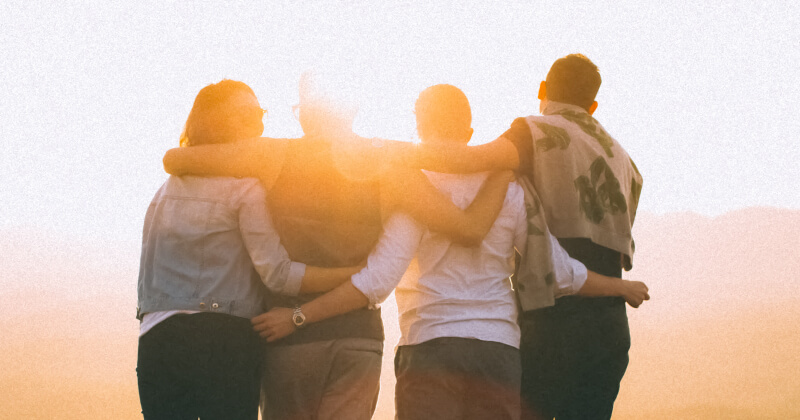
[Editor’s Note: May is Mental Health Awareness Month. In her monthly blog post, MCN’s Director of Witness to Witness, Kaethe Weingarten, PhD, reflects on grief, and what has changed (or not) since last year’s commemoration of Mental Health Awareness Month.]
The impact of the pandemic on so many people in so many different communities has been immense. I wrote about grief in a blog in May 2021 and, a year later, the need to attend to the subject remains as strong as ever. As of May 2022, the US death toll from COVID-19 is over one million people. Throughout the pandemic, our data collection has varied county to county, so we will never have an accurate death count. However, many people are recorded as dying from other causes, like heart attacks, who had undiagnosed coronavirus infections that precipitated fatal conditions. These deaths will never be counted as COVID deaths, but their families and friends grieve their loss as a death from COVID nonetheless.
The true toll of the pandemic is among a much larger number of people. Sociologists at Penn State and the University of Southern California came up with a “bereavement multiplier,” a way to calculate how many people each COVID death leaves behind and bereft. Their multiplier only counts relatives and with that marker, they estimate nine people are left behind to mourn each COVID-19 death. But that is a marker that omits the many other people who feel bereft when someone dies. It leaves out extended family, friends, neighbors, and colleagues, all of whom may be deeply affected by the person’s death.
We are a society in deep mourning and yet, in many ways, you wouldn’t know it. On the evening before President Biden’s inauguration, there was a moving display at the Washington Memorial of 400 lights, each of which stood for 1000 people who had died of COVID-19. President Biden said, “To heal we must remember… It’s hard sometimes to remember. But that’s how we heal. It’s important to do that as a nation. That’s why we’re here today.” That was in January, 2021. Over a year later, with over 600,000 more deaths, there have been no other national memorializations or events to mark the horrific toll of this virus on the lives of so many citizens.
Sarah Jaffe has called the absence of collective rituals of mourning “The Great Ungrieving.” It is a way of noting that a scourge that is impacting an entire world, our entire country, has become atomized and “farmed out,” as it were, to individuals and families to manage on their own. This is a political choice, not one based on what we know about human suffering. The pandemic has created many kinds of suffering, each of which is attended by difficult feelings, grief among them.
The choice to leave grief, of their suffering, up to individuals has many ramifications, of which I will mention a few.
- When we don’t acknowledge or attend to something that is right in front of our eyes, it creates distortions. In this case, grief is all around us, but as a nation we act as if it is an individual issue. If you had a loved one die in 2020, you are likely still suffering from that loss and yet the people around you, your community, is likely to be acting as if you have or you should have “moved on.” This feels like betrayal and abandonment and adds to the suffering that mourners already experience.
- In addition to the terrible toll of death itself, there is the suffering that derives from the lingering effects of having been ill with COVID. There is now a diagnosis of Long COVID, but depending on where you live, you may or may not be able to find treatment, or help to get through the health care maze that exists about what it is and how to treat it. There is no national clearing house or strategy to deal with a medical problem that may affect 15 to 30% of those who had a COVID infection. That number is staggering. As of February 2022, it is estimated that 60% of the adult population of the US has had a COVID infection. Using rough numbers, that means between 23 and 46 million American adults may be struggling with lingering symptoms of COVID. Is it likely that many communities or families are spared? What happens when people have fatigue and cannot reliably predict when they will or will not be able to attend to their tasks of daily living and their work responsibilities? What happens to their families? The question is rhetorical because we all know the havoc that ensues when routines can no longer be counted on.
- While the heartbreaking suffering that accompanies death may be forefront in our hearts, there are other losses that people have experienced during the pandemic that are also a source of sadness. These losses are often ones people suffer in silence, keenly aware that the loss of a vacation or the loss of visits to an elder are not in the same “league” as a death. And yet, these losses also produce sadness, even grief. The kind of grief that occurs with a loss that is difficult to share has been called “disenfranchised grief” and there are many categories of it. Losses of relationships that cannot be acknowledged, losses surrounded by stigma, losses that you grieve in ways that are idiosyncratic and that don’t fit your community’s social norms are just three examples of losses whose meaning to you may be profound but which may not be recognized by your social group in ways that match the depth of your feeling.
- Individualizing grief renders invisible the inequitable distribution of grief. Elders, essential workers, people of color, people with low incomes, and the unvaccinated have disproportionately suffered death during the pandemic. While researchers and journalists report this, the general public does not seem to adequately recognize the impact and ramifications of these disparities.
One such category of disproportionate death is the death of elderly Americans, accounting for 75% of COVID fatalities. In what may have been an extreme point of view, at the start of the pandemic, Texas Lieutenant Governor Dan Patrick suggested that “lots of grandparents” would be willing “to take a chance on [their] survival” in order for younger people to “get back to work.” The clear implication was that this group had less value than younger people.
Does the assignment of less value to a group explain this statistic? While 4% of registered nurses are Filipino American, over 25% of all deaths of nurses, as of May 2021, are Filipino Americans. This may reflect higher exposure to nursing COVID patients and more underlying medical conditions that place them at increased risk of severe disease and outcomes.
And how do we make sense of this statistic gathered from only some states and territories, contributing to the lack of visibility of disparities by race? Black children were 2.4 times more likely than white children to lose a parent or caregiver from COVID. This falls on pre-existing disparities that indicate that Black children are disproportionately impacted by grief, and thus all the physical and emotional stressors associated with grief, throughout their lifetimes. According to a 2017 study, Black Americans are significantly more likely than whites to have experienced the death of a mother, a father, and a sibling from childhood through midlife. Before the age of 10, Black children are three times more likely to lose a mother. From young adulthood through later life, Black people are also four times more likely than whites to have experienced the death of a child and twice as likely to experience the death of a spouse.
These numbers represent deaths of close kin. But Black Americans are clearly negatively impacted by deaths of other Black Americans in acts of violence, often widely publicized because they are committed by the state. Think of the impact that the murder of George Floyd had on Black Americans, our nation, and the global community. In one touching and profound video that went viral, a young African American woman calls in sick, not because she is physically ill but because she has to take time to process the emotional toll that continual exposure to traumatic loss takes on her along every dimension. A video she titled “Call in Black” has been viewed millions of times. In this moving video, she explains what prompted it.
Given the many ways that the experience of grief may be quite different for Black Americans, it comes as a shock – although it shouldn’t – that of the 4000 studies of grief and bereavement that have been published from 1998-2014, only 100 included samples of Black Americans. Thus, what we think we know about grief and bereavement is not based on the populations with the most experience with it!
- Not coincidentally, in 2022, the American Psychiatric Association has approved a new diagnostic category -- prolonged grief disorder, or PGD -- for its DSM-5-TR. No doubt this diagnosis will help some people receive better-targeted treatment and it may also mean that their health insurance will cover the cost of treatment. However, we can also ask, why now? There has been no advance in biomedical science such that there are biomarkers that can distinguish normal from prolonged grief. There are some people who fit the new criteria, but what if the social context were different? What if grief were collective? If, as a society, we didn’t make people feel alone and different? For many people, support has dried up, but the markers of their losses are everywhere, triggering grief at every turn.
Chronic Sorrow
We are a country experiencing chronic sorrow and we don’t know how to acknowledge or deal with it. What is chronic sorrow? The term originated with Simon Olshansky in 1962 to account for the experience of parents living with children with significant developmental impairments. Understanding the lifelong challenges faced by these parents and the unending grief they experienced as their hopes for their children could never be realized, Olshansky proposed the concept of chronic sorrow as a normal response to living with ongoing losses.
I suspect that most of the people we know are walking around with some degree of chronic sorrow and because we are all interconnected, my sorrow impacts you and yours impacts me.
There is an image I love that visualizes this feature of our lives: our human interrelatedness. It is called Indra’s Net. The net is infinite in dimension and in the center of its every node rests a jewel, reflecting every other jewel in the net. Today, neuroscientists have identified mirror neurons that fire in our brains when we observe intentional actions performed by others. This is a physical manifestation of interrelatedness; our very own nerve cells empathically resonate with others by mimicking them. Neurobiologically, I am what you do. Since that is so, because you and I are connected, because my mirror neurons mimic yours, the ways I comfort myself, the ways I take care of myself, the ways I acknowledge my chronic sorrow and yours will not only impact me, they will impact you.
None of us can make a nation grieve, but each of us can do our part to acknowledge the chronic sorrow we do feel, that our family members feel, our neighbors feel, our colleagues feel, our friends feel and the person we pass on the street feels. Each of us can care for ourselves and each other because compassionate witnessing makes a difference.
Dr. Weingarten offers a twice-monthly newsletter, filled with resources, recent articles, and her news and views. Sign up for the newsletter on the Witness to Witness webpage.
Got some good news to share? Contact us on our social media pages above.
Return to the main blog page or sign up for blog updates here.
- Log in to post comments
